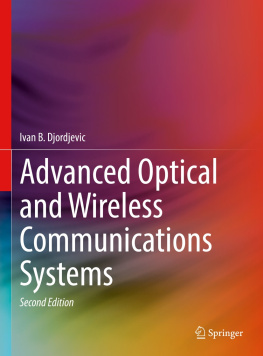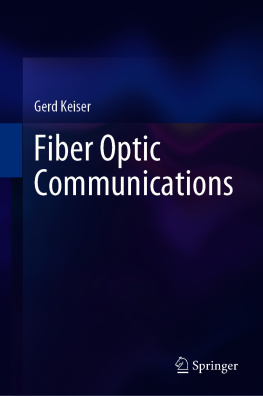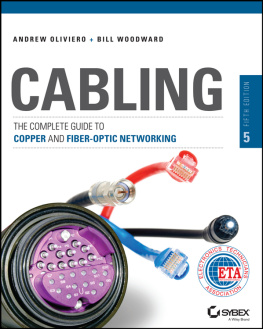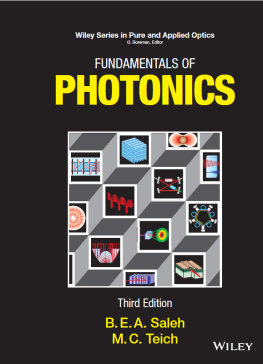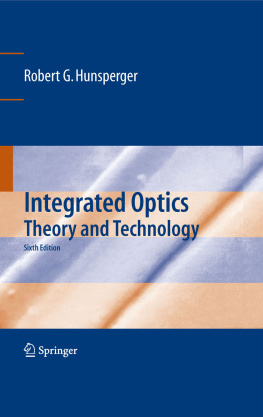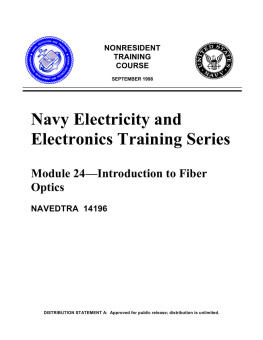Bob Chomycz - Planning Fiber Optics Networks
Here you can read online Bob Chomycz - Planning Fiber Optics Networks full text of the book (entire story) in english for free. Download pdf and epub, get meaning, cover and reviews about this ebook. year: 2009, publisher: McGraw-Hill Companies, The, genre: Children. Description of the work, (preface) as well as reviews are available. Best literature library LitArk.com created for fans of good reading and offers a wide selection of genres:
Romance novel
Science fiction
Adventure
Detective
Science
History
Home and family
Prose
Art
Politics
Computer
Non-fiction
Religion
Business
Children
Humor
Choose a favorite category and find really read worthwhile books. Enjoy immersion in the world of imagination, feel the emotions of the characters or learn something new for yourself, make an fascinating discovery.

- Book:Planning Fiber Optics Networks
- Author:
- Publisher:McGraw-Hill Companies, The
- Genre:
- Year:2009
- Rating:5 / 5
- Favourites:Add to favourites
- Your mark:
- 100
- 1
- 2
- 3
- 4
- 5
Planning Fiber Optics Networks : summary, description and annotation
We offer to read an annotation, description, summary or preface (depends on what the author of the book "Planning Fiber Optics Networks " wrote himself). If you haven't found the necessary information about the book — write in the comments, we will try to find it.
Planning Fiber Optics Networks — read online for free the complete book (whole text) full work
Below is the text of the book, divided by pages. System saving the place of the last page read, allows you to conveniently read the book "Planning Fiber Optics Networks " online for free, without having to search again every time where you left off. Put a bookmark, and you can go to the page where you finished reading at any time.
Font size:
Interval:
Bookmark:
Planning Fiber Optic Networks
About the Author
Bob Chomycz is the founder and president of Telecom Engineering, Inc.; a company specializing in fiber optic telecommunications systems engineering and construction. He is the author of McGraw-Hills Fiber Optic Installers Field Manual.
Bob Chomycz


Copyright 2009 by The McGraw-Hill Companies, Inc. All rights reserved. Except as permitted under the United States Copyright Act of 1976, no part of this publication may be reproduced or distributed in any form or by any means, or stored in a database or retrieval system, without the prior written permission of the publisher.
ISBN: 978-0-07-164269-9
MHID: 0-07-164269-2
The material in this eBook also appears in the print version of this title: ISBN: 978-0-07-149919-4, MHID: 0-07-149919-9.
All trademarks are trademarks of their respective owners. Rather than put a trademark symbol after every occurrence of a trademarked name, we use names in an editorial fashion only, and to the benefit of the trademark owner, with no intention of infringement of the trademark. Where such designations appear in this book, they have been printed with initial caps.
McGraw-Hill eBooks are available at special quantity discounts to use as premiums and sales promotions, or for use in corporate training programs. To contact a representative please e-mail us at bulksales@mcgraw-hill.com.
Information contained in this work has been obtained by The McGraw-Hill Companies, Inc. (McGraw-Hill) from sources believed to be reliable. However, neither McGraw-Hill nor its authors guarantee the accuracy or completeness of any information published herein, and neither McGraw-Hill nor its authors shall be responsible for any errors, omissions, or damages arising out of use of this information. This work is published with the understanding that McGraw-Hill and its authors are supplying information but are not attempting to render engineering or other professional services. If such services are required, the assistance of an appropriate professional should be sought.
TERMS OF USE
This is a copyrighted work and The McGraw-Hill Companies, Inc. (McGraw-Hill) and its licensors reserve all rights in and to the work. Use of this work is subject to these terms. Except as permitted under the Copyright Act of 1976 and the right to store and retrieve one copy of the work, you may not decompile, disassemble, reverse engineer, reproduce, modify, create derivative works based upon, transmit, distribute, disseminate, sell, publish or sublicense the work or any part of it without McGraw-Hills prior consent. You may use the work for your own noncommercial and personal use; any other use of the work is strictly prohibited. Your right to use the work may be terminated if you fail to comply with these terms.
THE WORK IS PROVIDED AS IS. McGRAW-HILL AND ITS LICENSORS MAKE NO GUARANTEES OR WARRANTIES AS TO THE ACCURACY, ADEQUACY OR COMPLETENESS OF OR RESULTS TO BE OBTAINED FROM USING THE WORK, INCLUDING ANY INFORMATION THAT CAN BE ACCESSED THROUGH THE WORK VIA HYPERLINK OR OTHERWISE, AND EXPRESSLY DISCLAIM ANY WARRANTY, EXPRESS OR IMPLIED, INCLUDING BUT NOT LIMITED TO IMPLIED WARRANTIES OF MERCHANTABILITY OR FITNESS FOR A PARTICULAR PURPOSE. McGraw-Hill and its licensors do not warrant or guarantee that the functions contained in the work will meet your requirements or that its operation will be uninterrupted or error free. Neither McGraw-Hill nor its licensors shall be liable to you or anyone else for any inaccuracy, error or omission, regardless of cause, in the work or for any damages resulting therefrom. McGraw-Hill has no responsibility for the content of any information accessed through the work. Under no circumstances shall McGraw-Hill and/or its licensors be liable for any indirect, incidental, special, punitive, consequential or similar damages that result from the use of or inability to use the work, even if any of them has been advised of the possibility of such damages. This limitation of liability shall apply to any claim or cause whatsoever whether such claim or cause arises in contract, tort or otherwise.
The purpose of this book is to help the reader understand the details in planning and implementing fiber optic networks. Both short-reach and long-haul transmission links are discussed. All major fiber planning parameters are reviewed with appropriate background theory and practical design calculations. Guidelines are provided for planning both SONET/SDH and Ethernet networks. Practical examples are given to help the reader with theory application. The book is also easy to follow and concise. This helps the reader to quickly understand the technology without having to spend excessive time reading through copious text.
Planning Fiber Optic Networks can benefit the following professionals: engineers, network managers, planners, technicians, technologists students, and others interested in learning about this technology.
Suggestions and comments are always welcome. Please feel free to contact me at my email address shown below. I will do my best to try to respond to you in a timely fashion.
Bob Chomycz, P.Eng.
Telecom Engineering, Inc.
Telecom Engineering USA, Inc.
bchomycz@telecomengineering.com
www.TelecomEngineering.com
Signal Propagation
It is important to understand the basics of optical fiber signal propagation to be able to better apply fiber design principles. This chapter introduces the theory behind signal propagation in a single-mode fiber. Multimode fiber is not discussed in this book.
A single-mode fiber signal can be separated into two basic waveforms: the optical carrier and the information signal. The optical carrier is generated by a laser or LED in the transceiver and ideally has constant power (intensity), wavelength, and phase. The information signal is a waveform that contains serially encoded information that is transmitted in the fiber. Lets first consider the case of an optical carrier propagating in free space. It can be considered as a plane transverse electromagnetic (TEM) wave with the electric and magnetic field components represented by Eqs. (1.1) and (1.2),. The electric field exists in the x-z plane and the magnetic field exists in the y-z plane both propagating along the fibers z axis. Both electric and magnetic fields are perpendicular to the direction of propagation of the z axis and hence transverse. The components of these fields can be written as Eqs. (1.3), (1.4), and (1.5). Assume for now that the optical wave is monochromatic, consisting of just one wavelength. In reality this is not possible but is used here to help simplify the theory.




Font size:
Interval:
Bookmark:
Similar books «Planning Fiber Optics Networks »
Look at similar books to Planning Fiber Optics Networks . We have selected literature similar in name and meaning in the hope of providing readers with more options to find new, interesting, not yet read works.
Discussion, reviews of the book Planning Fiber Optics Networks and just readers' own opinions. Leave your comments, write what you think about the work, its meaning or the main characters. Specify what exactly you liked and what you didn't like, and why you think so.

